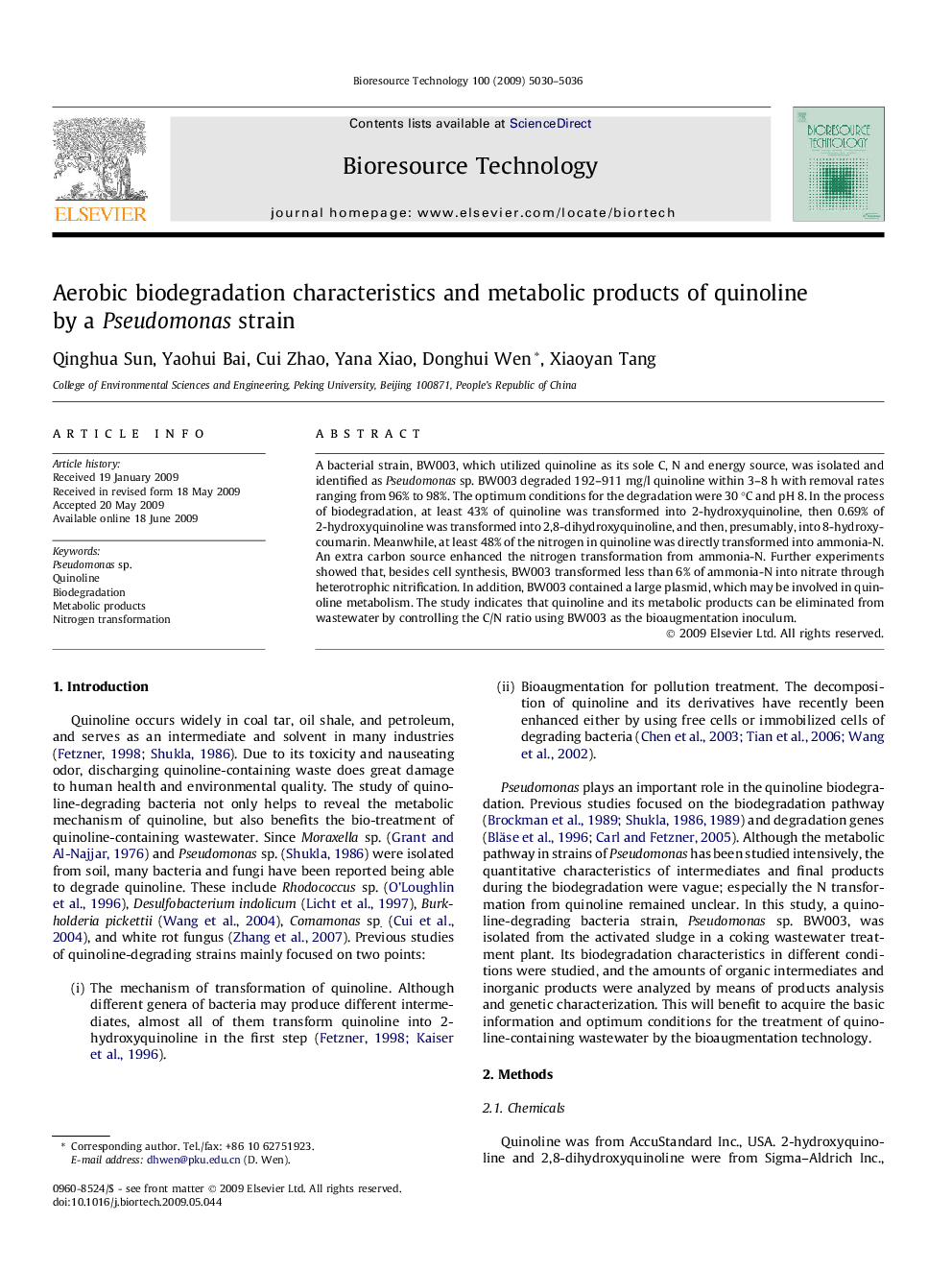| Article ID | Journal | Published Year | Pages | File Type |
|---|---|---|---|---|
| 684452 | Bioresource Technology | 2009 | 7 Pages |
A bacterial strain, BW003, which utilized quinoline as its sole C, N and energy source, was isolated and identified as Pseudomonas sp. BW003 degraded 192–911 mg/l quinoline within 3–8 h with removal rates ranging from 96% to 98%. The optimum conditions for the degradation were 30 °C and pH 8. In the process of biodegradation, at least 43% of quinoline was transformed into 2-hydroxyquinoline, then 0.69% of 2-hydroxyquinoline was transformed into 2,8-dihydroxyquinoline, and then, presumably, into 8-hydroxycoumarin. Meanwhile, at least 48% of the nitrogen in quinoline was directly transformed into ammonia-N. An extra carbon source enhanced the nitrogen transformation from ammonia-N. Further experiments showed that, besides cell synthesis, BW003 transformed less than 6% of ammonia-N into nitrate through heterotrophic nitrification. In addition, BW003 contained a large plasmid, which may be involved in quinoline metabolism. The study indicates that quinoline and its metabolic products can be eliminated from wastewater by controlling the C/N ratio using BW003 as the bioaugmentation inoculum.
